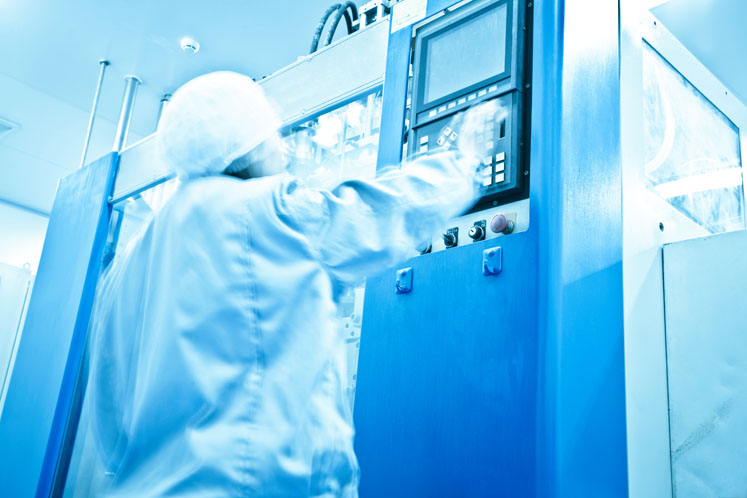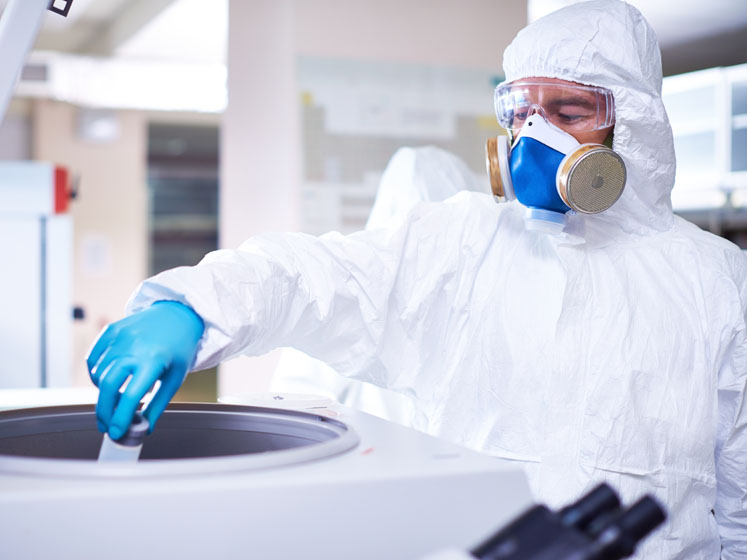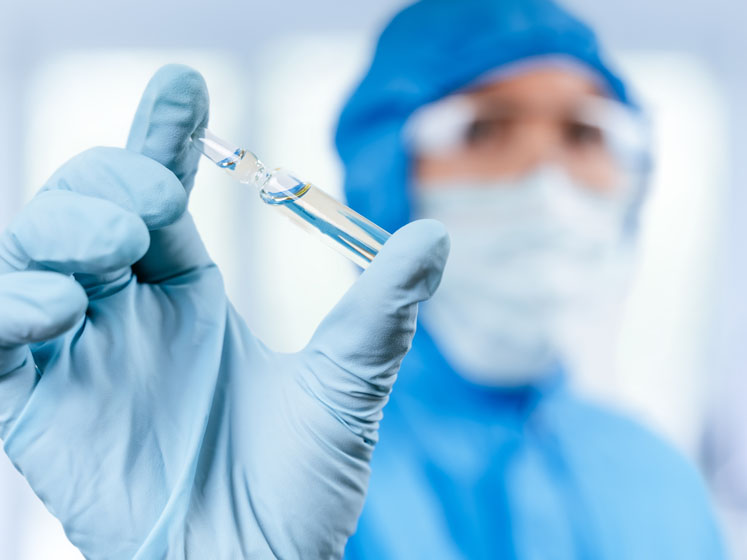The international highly potent active pharmaceutical ingredient (HPAPI) market is growing rapidly. According to Kenneth Research, it is forecast to be worth $33.15 billion by 2025 — up from $16 billion in 2016 — and more than doubling in size in less than 10 years.1
More than 25% of all drugs worldwide are currently classified as highly potent, making HPAPIs one of the most prominent segments of the pharmaceutical industry.2
This surge has predominantly been driven by the potential that these ingredients have to enhance the efficacy of new drugs for patients. This is particularly true for the treatment of serious or chronic conditions, including therapies for cancer, cardiovascular diseases and diabetes.
Advanced therapeutics using HPAPIs have a significant advantage compared with standard ingredients when it comes to enhancing the patient experience and ultimately facilitating compliance with treatment regimes.
They elicit a more targeted pharmacological effect at a lower concentration when compared with traditional alternatives, reducing the dosage size and minimising potential side-effects.
In addition, as they are often used in drug products that are intended to treat the unmet needs of patients with serious, life-threatening conditions, HPAPIs often receive fast-track designation or accelerated approval.
This means that they frequently experience an expedited route to market, which means that patients can enjoy the benefits of new, more effective treatments faster.
The challenge posed by HPAPIs
Although their benefits mean that HPAPIs play a valuable role in pharmaceutical innovation, their potent nature poses unique challenges when it comes to handling them safely during the development and manufacturing process.
Failure to understand their low permissible exposure limits and the containment technology required can mean that operators and even auxiliary personnel could be exposed to potentially toxic doses.
Such an event can have significant repercussions for drug developers, both legally and financially. Failing to ensure the right health and safety standards can result in substantial fines and could lead to long-term reputational damage.
Ensuring the right approach to ensure success
With this in mind, an effective containment strategy should be the focus of any HPAPI development or manufacturing project. From initial development through to production and testing, access to the right equipment and expertise will facilitate success and ensure safety. There are several factors to bear in mind when establishing a supply strategy.

Equipment and the site: Engineering controls for containment are the primary safety solution during HPAPI handling, but unit operations should be designed to integrate with multiple other layers of protection.
No two sites are the same when it comes to engineering controls. So, when evaluating a facility, it is important to ask the “what if” questions at every stage of the process:
- If an isolator fails, what happens next?
- Is personal protective equipment (PPE) considered to be a primary basis of safety?
This kind of questioning is crucial to understand the process and assess the ability to maintain containment when things go wrong.
Before establishing a containment strategy, it is critical to establish a rationalised containment target; typically based on an Occupational Exposure Limit (OEL), this is most accurate when based on human in vivo studies.
However, new drug candidates will not have this information during the early stages of formulation and will need both development and manufacturing support to perform such studies.
Different known structural motifs and molecular moieties can be predicted to elicit certain biological responses. This is when in silico (computer-assisted modelling) evaluations such as quantitative structural activity relationship ([Q]SAR) methodologies can help to predict a wide variety of toxicological properties.
These techniques are not only used in drug design, but widely accepted and heavily utilised in impurity assessments in accordance with International Council for Harmonisation of Technical Requirements for Pharmaceuticals for Human Use (ICH) M7 guidance.
This, coupled with input from an experienced toxicologist and any compound-specific data, can be used to build an appropriately risk-assessed containment target, even at the earliest stages of development.
This can then be used to ensure the appropriate level of control is introduced into the process.
It is best to evaluate this early on, as it is easier to reduce containment needs at an HPAPI supplier than to have to address a lower target that may be beyond a supplier’s capabilities as the programme progresses. This can delay the project and force transfers — adding both time and cost to the overall operation.
Processes: Unit operations and their process flow(s) should take HPAPI-specific engineering controls into account to ensure that safety is maintained. Procedures such as powder handling (weighing, dispensing, charging and packaging), cleaning and line breaks can be thought of as “high risk.”
Further to suitable design, containment verification and successful decontamination after the process is done are essential.
The chemistry of the formulation may also require other types of hazards to be handled, such as pyrophoric reagents, high pressure conditions or toxic off-gassing, which require controls that are not designed for powder containment (the main focus of HPAPI equipment). These processes can work either in harmony or in conflict with the existing containment set-up and may extend beyond in-reactor chemistry.

Considerations should also include items such as specialised maintenance protocols (bag in/bag out filters, for example, premaintenance equipment decontamination), handling of in-suite documentation and emergency response procedures for the HPAPI-handling area and support personnel.
Even small considerations can make a big difference and will give an indication of the level of diligence that was done during the design phase. A segregated rally point for personnel, for instance, can be implemented for when standard degowning is not able to occur prior to evacuation.
This will prevent the potential exposure of evacuated non-gowned personnel by uncontrolled material migration.
Personnel: Even the most secure engineering controls and processes are dependent on the human element. Site-wide HPAPI awareness with specialised personnel is vital to establishing and maintaining a culture in which these programmes can not only survive but thrive. Continuous education and communication are crucial.
This should not just be between the chemist and the operator; success is cross-functional and reliant on compliance of chemistry, process engineering, analytical development, quality, environmental, health and safety (EH&S), and production teams to design and then implement a unified process control, containment and cleaning strategy.
The process is only as strong as the weakest link … and failure to create and maintain a holistic approach can result in process failures or even exposure incidents.
Testing and industrial hygiene verification
It is not enough to simply design a process and containment strategy. To ensure that the engineering controls and personnel training successfully achieve and maintain the containment target for the process, it is vital to perform containment verification testing of the suite — akin to operation qualification (OQ) — before any HPAPI is introduced.
This industrial hygiene (IH) verification can be done using a surrogate material — a safe, non-toxic substance that presents the worst-case physical characteristics of an HPAPI (easily airborne, for example) that could be processed in the suite.
The design of these studies should include enough iterations to be statistically significant, extended duration to ensure high sensitivity for low containment targets, assessment of all planned unit operations and loss of containment migration studies.
This will ensure that the containment system design targets become reality and that operator training is adequate to ensure safe and consistent performance.
Hygiene monitoring
Once surrogate testing has been shown to be successful and as products and processes mature in the suite, it is crucial that ongoing product-specific performance qualification is performed.
This should include regular product-specific surface and air monitoring analysis. This is the best way to determine whether there has been any reduction in performance of equipment, processes or personnel that needs to be addressed to pre-empt a potential incident.
Similar to initial surrogate testing, studies should be designed to include a sample size that’s large enough to have statistical significance to remove bias and achieve sensitivity for an appropriate time-weighted average (TWA).
When selecting an HPAPI supplier, evaluating their facility and containment plan against these criteria can evaluate the maturity of their programme and depth of their experience. These elements are key to ensuring that they have an appropriate culture and controls in place, as they both play critical roles in successful development and manufacturing.
Gaining access to state-of-the-art equipment and expert knowledge
Choosing a supplier early in the lifecycle of a drug candidate can be challenging. Often, companies focused on early phase development lack the infrastructure to handle HPAPIs and/or the expertise and scale to shepherd the product through clinical development to commercialisation.

Late-phase or commercial suppliers typically lack the speed, flexibility and assets to handle early phase products. However, there are outsourcing organisations that not only specialise in the development of HPAPIs but also offer the manufacturing capacity and flexibility to meet progressive programme needs.
These outsourcing partners offer in-depth insight into the potential of HPAPIs that drug companies, particularly smaller biotech organisations with limited internal resources, can benefit from when developing their products, as well as guidance in terms of assessing and handling potent compounds safely.
Just as important as having HPAPI-capable production capacity, they also have access to commercialisation expertise, allowing drug companies to potentially reduce the time-to-market for their new treatments.
CMC and technical support resources ensure that, as a result of rapid clinical progression, the necessary process control and characterisation exists to ensure a right-first-time submission from IND to NDA.
Advanced and experienced partners will not only have the capacity required to deliver projects in a range of sizes, but the flexibility to adapt them to the unique needs of the drug being developed. Working with such partners can be just as impactful as the drug candidate itself in defining the success of the programme.
HPAPIs: the future is bright
Given their exciting ability to enhance drug usability and improve efficacy, it is no surprise that HPAPIs are becoming ever more widely used.
Existing and novel HPAPIs are being utilised in a host of innovative new drug delivery systems, such as antibody drug conjugates (ADCs), prodrugs, liposomal and other modified release formulation platforms that can turn formerly “undruggable” compounds into viable therapeutic candidates.
They are even being harnessed to reinvigorate previously approved therapies with improved efficacy or safety using 505(b)(2) filing strategies using known and understood HPAPIs.
It is clear that the HPAPI market will most likely increase in value and continue to be a key driver of pharmaceutical sector growth for years to come. There is currently expanding capacity but constrained competency in the HPAPI contract development and manufacturing space.
If drug companies with HPAPI assets want to secure the right partner, now is a good time to act. Investing in and developing a relationship with the right supplier to facilitate the development and manufacture of HPAPIs will ensure that they have access to the right infrastructure and abilities to ensure safe and effective delivery.
References
- www.marketwatch.com/press-release/high-potency-api-hpapi-market-to-record-a-robust-growth-rate-for-the-covid-19-period-during-2025-2020-09-21.
- www.prnewswire.com/news-releases/hpapi-and-cytotoxic-drugs-manufacturing-market-3rd-edition-2020-2030-301057435.html.
